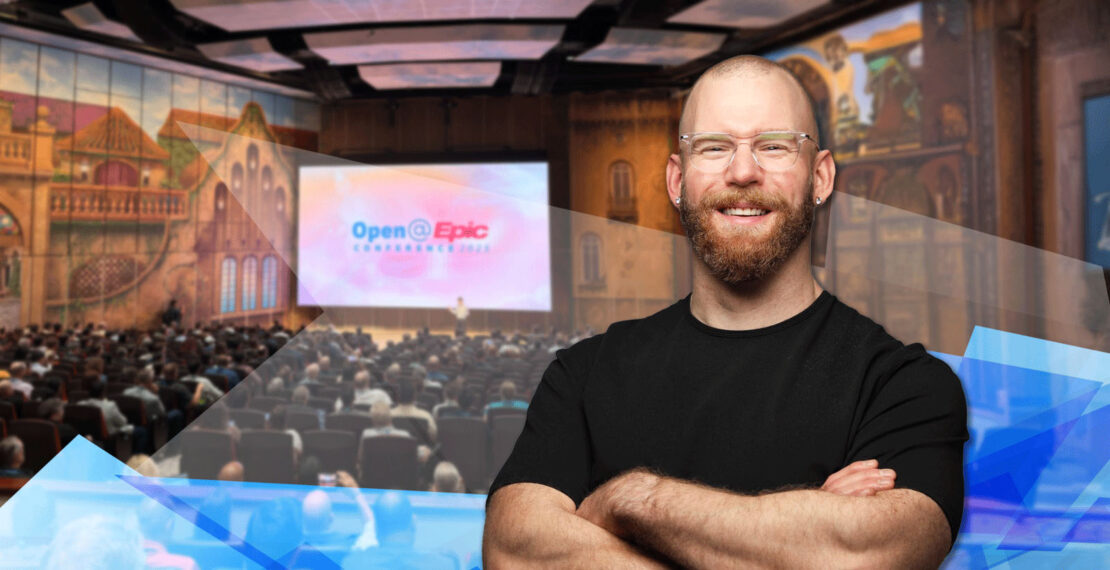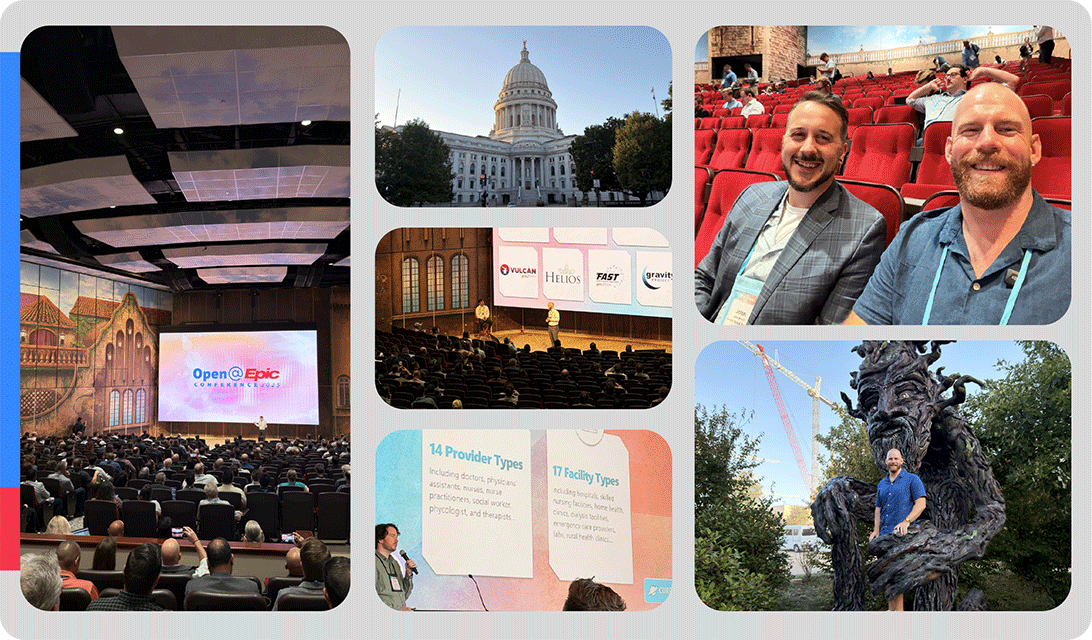Open@Epic 2025: Brendan Iglehart on Why Interoperability Just Got Easier for Everyone

This September, Epic opened its doors for the first time to the broader public with a one-day conference focused on interoperability. To unpack what this means for digital health, we sat down with Brendan Iglehart, Staff Healthcare Architect at Newfire Global Partners and a former Epic team member, who attended the event.
This year’s Epic conference was unusual because it was open to anyone, not just Epic customers and vendor partners. What was the main focus of the event?
Brendan Iglehart: That’s right. Historically, Epic conferences have mostly been closed gatherings for healthcare provider organizations that are already Epic customers in some way. This one was different in that anyone could sign up, and the focus was squarely on interoperability.
Epic shared updates on new capabilities, walked through how different healthcare applications are integrating, and provided broad overviews for developers who may be newer to the space. The content wasn’t groundbreaking for me personally, but for someone just starting out, it was a valuable orientation to the current state of interoperability.
What stood out to you as the most important announcements for digital health developers?
BI: Two things.
First, Epic has historically had a mix of public and private APIs. The private ones were gated behind a membership program, and even then you couldn’t see the full list—you had to go back and forth with Epic to find out what was available for your use case. That made it hard for developers to know what problems they could solve.
Now, Epic is publishing a more comprehensive list of those APIs for members. I expect that this will mean less back-and-forth with Epic because the world of what’s possible will be more available upfront—you can get inspired directly. That’s a big step forward.
Second, Epic released new playbooks that walk through common use cases like remote patient monitoring. They explain how to integrate with Epic and what the implications are. In the past, you would have had to hire someone like me or rely on deep industry expertise to figure that out. With these resources, the barrier to entry for developers is significantly lower.
Taken together, these changes signal that Epic is opening up. They want third-party developers, whether or not they’re healthcare systems themselves, to build solutions that improve workflows for Epic customers.
And what about patients? Were there any updates, recent or ongoing, that impact their experience directly?
BI: Yes, two in particular.
The first is a universal login for MyChart through a program called MyChart Central that Epic announced last month. Today, every healthcare organization has its own Epic instance, so if you’ve visited three different providers, you might have three different MyChart logins. Epic is rolling out an access layer where patients will only need a single login across systems. That’s significant for app developers because it simplifies patient authentication dramatically and puts less onus on patients to remember multiple passwords to be able to share all of their data.
The second is what’s called Individual Access Services, or IAS. Historically, nationwide networks like TEFCA were reserved for direct treatment use cases. Now, patients are increasingly able to use those same networks to grant third-party applications access to their data. The technical capability has existed in some form for years, but regulatory and industry momentum are only now making it real and scalable.
For patients, this means the apps they actually want to use—the ones that depend on their health data—will become much easier to connect and activate.
How do these changes affect your work with clients?
BI: The biggest impact is efficiency. Before, I often had to repeat the same introductory explanations about what Epic does or doesn’t make possible. Now I can point clients to Epic’s official resources as a baseline.
That means the time we spend together is more advanced from the start. Instead of multiple conversations to get someone up to speed, we can dive straight into the higher-level solutioning. It makes projects easier to stand up and faster to execute on.

You’re a former Epic employee. How was it being back on campus for this event?
BI: Nostalgic. The campus has grown, with new buildings and a lot more people. The conference opened with a keynote on Epic’s culture and principles. Some people roll their eyes at that, but it sets the context for how they make decisions. In my experience, Epic has been consistent in sticking to its mission of serving patients and customers. That hasn’t changed, which is notable especially as there continue to be industry murmurs about the future of Epic’s leadership team.
The conference also happened against the backdrop of the legal dispute between Epic and Particle Health. How do you see that situation?
BI: It’s definitely a serious case. The allegation is that Particle gave organizations inappropriate access to patient data through the Carequality network, essentially enabling data retrieval by parties that shouldn’t have had that power. This resulted in Particle filing an antitrust lawsuit against Epic, alleging that they are using their power to muscle out competition.
Epic has always been cautious about interoperability. Technically, many things are possible, but the question is always: does this serve the patient (and by extension, Epic’s customers, who are largely health systems)? Sometimes yes, sometimes no. In this case, Epic believed Particle’s approach crossed the line and shut them down, which led to the lawsuit.
As a patient, I wouldn’t want my data shared for use cases that don’t directly involve my care or that I’ve otherwise consented to, so I understand Epic’s stance. At the same time, the industry is debating how to balance data availability for innovation with the safeguards needed to maintain patient and organizational trust.
Any final reflections?
BI: For a one-day event, it was worthwhile, and I’d attend again. It’s also a great starting point for newer players in digital health who want to understand interoperability. And on a lighter note, Madison in September is beautiful. Epic knows how to pick the right time of year!
Key Takeaway
For healthtech leaders, the message is clear: Epic is opening doors that were once tightly shut. With new APIs, clearer playbooks, and easier patient access, the path from idea to implementation is shorter than ever. If you’re exploring how to take advantage of these changes, Brendan and Newfire’s team are here to help you move faster, avoid pitfalls, and build solutions that truly serve patients.